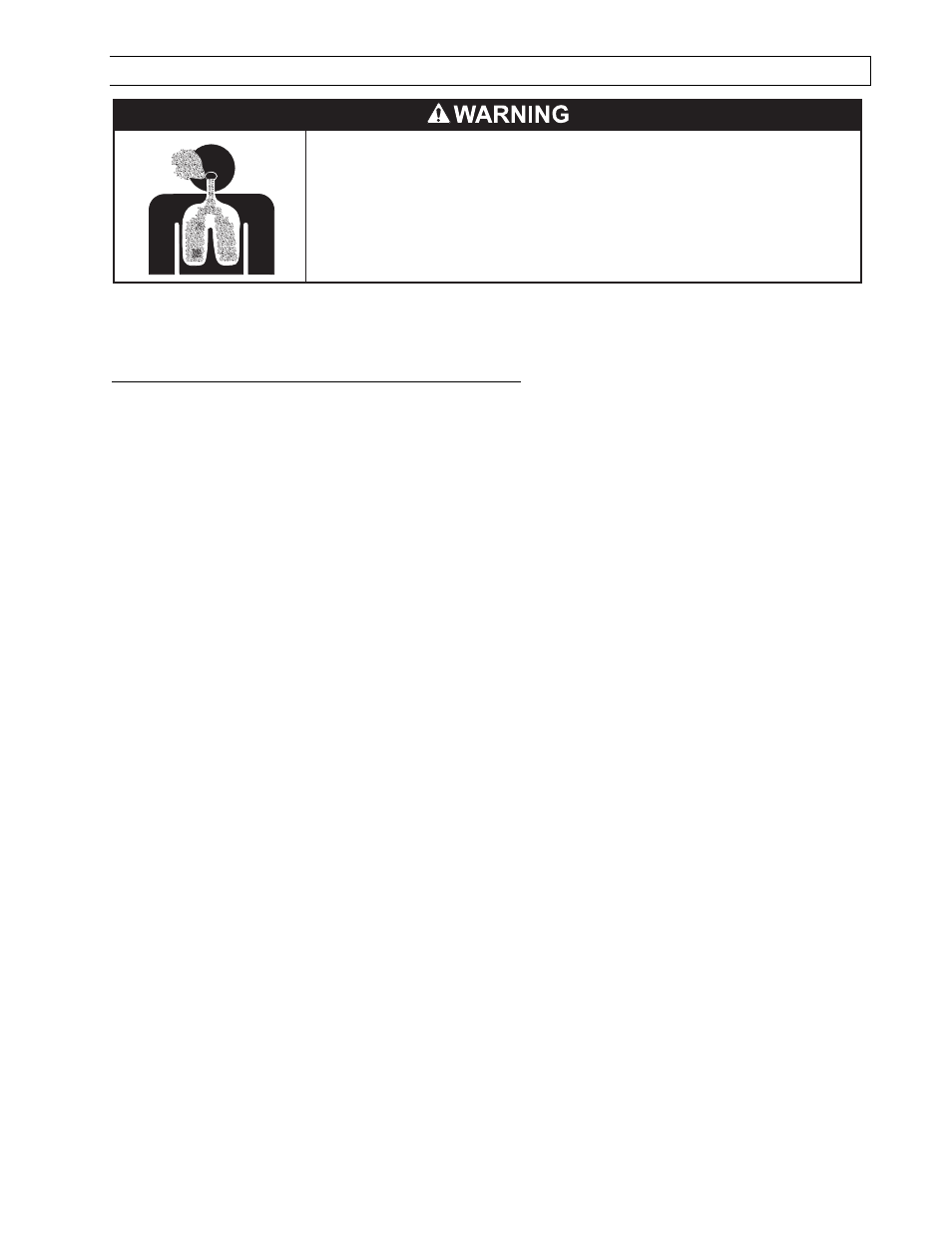0) venting – Space Ray LTS Series Two Stage User Manual
Page 40

Form #43155040
May 2013
-39-
17.0)
VENTING
Failure to do so may result in death, serious injury, property damage or illness
from Carbon Monoxide poisoning.
Heaters installed in an unvented mode require a minimum ventilation flow of
4 CFM per 1,000 Btu/hr of total installed capacity.
In buildings with airborne contamination the heater must be installed with
fresh air for combustion.
CARBON MONOXIDE HAZARD
A.
A.
A.
A.
BASIC FLUE VENTING
BASIC FLUE VENTING
BASIC FLUE VENTING
BASIC FLUE VENTING — Venting must comply with the latest edition of the National Fuel Gas Code (ANSI
Z223.1-latest edition) or the authority having jurisdiction. Other venting references are in the equipment
volume of the ASHRAE Handbook.
SINGLE HEATER VENTING (VERTICAL THROUGH THE ROOF)
SINGLE HEATER VENTING (VERTICAL THROUGH THE ROOF)
SINGLE HEATER VENTING (VERTICAL THROUGH THE ROOF)
SINGLE HEATER VENTING (VERTICAL THROUGH THE ROOF)
1.
When venting the heater to outside of building through a roof, use single-wall metal pipe. This is to be
constructed of galvanized sheet metal or other approved noncombustible corrosion-resistant material as
allowed by state or local codes.
2.
A vent passing through a combustible roof shall extend through an approved clearance roof thimble.
Double-wall, Type B vent must be used for the portion of the vent system which passes through the
combustible roof. An approved vent cap must be attached to end of the flue.
3.
The maximum equivalent length of vent pipe should be carefully observed. A safety switch in the heater
is designed to shut the heater off before excessive flue restriction causes bad combustion. Refer to the
Vent Sizing Table for vent pipe diameter.
•
Minimum Equivalent Length = 5 ft. of pipe
•
Maximum Equivalent Length = 100 ft. of 4” pipe for 40-175 Models and 6” pipe for 180-250 Models
Use the following correction factors to obtain the equivalent length:
•
Subtract 15 ft. if the run is horizontal. (maximum horizontal length for 4” pipe is 25 ft.)
•
Subtract 10 ft. for an approved vent cap.
•
Subtract 10 ft. for each elbow beyond 15 ft. from the heater.
•
Subtract 15 ft. for each elbow within 15 ft. of the heater.
4.
Joints between sections of piping shall be fastened by sheet metal screws or other approved means and
should be sealed to prevent leakage of flue gas into building. Aluminum or Teflon tape suitable for 550ºF
(3M Company tapes 433 or 363) or silicone sealant is recommended.
5.
Avoid locating elbows in the first 5’ of vent pipe whenever possible. Limit to (2) 90° elbows. When vent
pipe is in a horizontal run, it must have 1/4 inch per foot rise.
6.
All portions of the vent pipe shall be supported to prevent from sagging (6’ spacing is recommended).
7.
When the vent pipe passes through areas where the ambient temperature is likely to induce
condensation of the flue gases, the vent pipe should be insulated and a condensation drain should be
provided.
8.
Minimum clearance for single-wall flue pipe to combustible material shall be 6 inches. This may be
reduced when the combustible material is protected as specified in the National Fuel Gas Code or the
authority having jurisdiction.
9.
Single-wall metal pipe shall not originate in any unoccupied attic or concealed space and shall not pass
through any attic, inside wall or concealed space, or through any floor. For the installation of a single-wall
metal pipe through an exterior combustible wall, refer to latest edition of the National Fuel Gas Code or
the authority having jurisdiction.
10.
A venting system shall terminate at least 3 ft. above any forced air inlet located within 10 ft.
